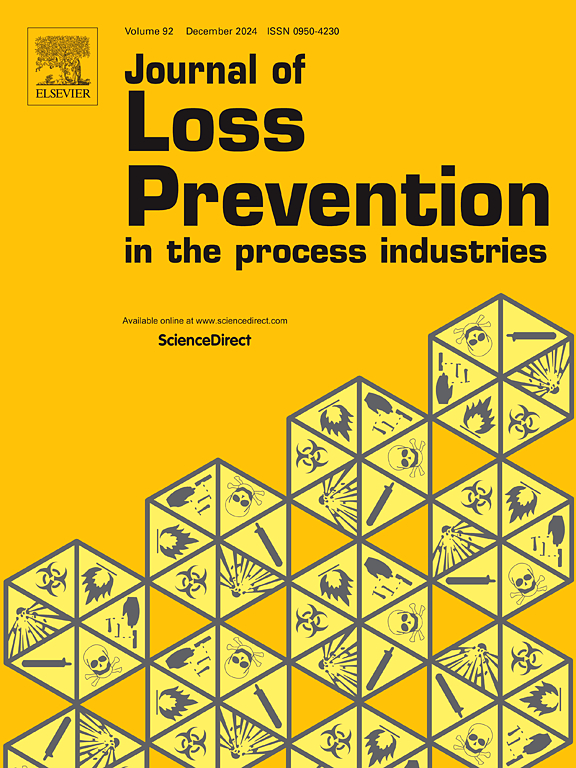碎屑混合对细粒稻壳中粉尘云点火和传播的影响
IF 3.6
3区 工程技术
Q2 ENGINEERING, CHEMICAL
Journal of Loss Prevention in The Process Industries
Pub Date : 2025-04-11
DOI:10.1016/j.jlp.2025.105651
引用次数: 0
摘要
大颗粒碾碎糙米(简称米渣)是稻壳粉的伴生产物,广泛存在于粮粉加工和运输行业中。稻壳粉尘与巨大的碎片相结合,可以减少混合粉尘云中粉尘爆炸的后果。以70%的比例添加的碎片大大减缓了火焰的蔓延。然而,在500 g/m3的尘云浓度下,包括10%百分比的碎片,平均火焰传播速度(AFSV)增加16.9%,最大火焰传播速度(MFSV)增加33.3%。这种强化现象在不同的尘云浓度中持续存在。对混合尘云的分散性进行的测试表明,吸附在较大颗粒顶部的细尘颗粒通常在上升时被剥离,从而增加了混合尘云的分散性。这导致形成一个尘云系统有效地较小的颗粒尺寸,从而导致火焰蔓延速度(FSV)的增加。此外,由于颗粒较大,粉尘云的分散性增强,稻壳粉尘云的最低着火温度(MIT)降低。休止角(AOR)和豪斯纳比(HR)分析表明,大颗粒的加入提高了混合粉尘云的流动性,从而增加了粉尘爆炸的风险。本文章由计算机程序翻译,如有差异,请以英文原文为准。
Effect of debris mixing on ignition and propagation of dust clouds in fine rice husk
As the associated product of rice husk dust, large particles of crushed brown rice (abbreviated as debris) are widely found in grain dust processing and transportation industry. The rice husk dust is combined with huge pieces of debris, which can reduce the consequences of dust explosion in the mixed dust cloud. Debris added at a 70 % ratio considerably slows the spread of flames. However, at 500 g/m3 of dust cloud concentration, including a 10 % percentage of debris increases the average flame spread velocity (AFSV) by 16.9 % and the maximum flame spread velocity (MFSV) by 33.3 %. This intensify phenomenon persists across varying dust cloud concentrations. Tests on the dispersibility of blended dust clouds revealed that fine dust particles that have been adsorbed on top of bigger particles typically stripped off upon lifted, increasing the blended dust cloud's dispersibility. This leads to the formation of a dust cloud system with efficiently smaller particle sizes, consequently resulting in an increase in flame spread velocity (FSV). Moreover, owing to the enhanced dispersibility of the dust cloud due to the inclusion of larger particles, the minimum ignition temperature (MIT) of rice husk dust clouds decreases. Analysis of the angle of repose (AOR) and Hausner ratio (HR) indicates that the incorporation of larger particles improves the flowability of the blended dust cloud, thereby increasing the risk of dust explosions.
求助全文
通过发布文献求助,成功后即可免费获取论文全文。
去求助
来源期刊
CiteScore
7.20
自引率
14.30%
发文量
226
审稿时长
52 days
期刊介绍:
The broad scope of the journal is process safety. Process safety is defined as the prevention and mitigation of process-related injuries and damage arising from process incidents involving fire, explosion and toxic release. Such undesired events occur in the process industries during the use, storage, manufacture, handling, and transportation of highly hazardous chemicals.

 求助内容:
求助内容: 应助结果提醒方式:
应助结果提醒方式:


